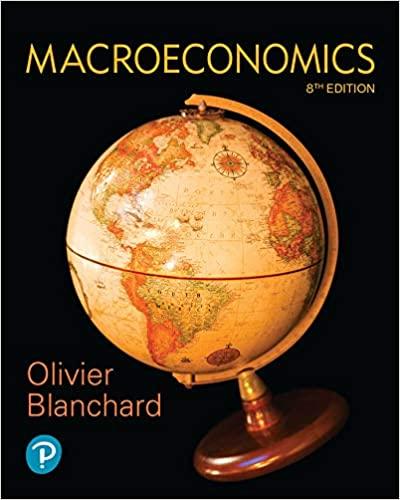solve the problem
2. Suppose the economy is characterized by the following New Keynesian model. (3) N. = BETHI+ KI, + G ( 4) where the notation is exactly the same as in the lectures notes, that is r, denotes the output-gap, i, the nominal short-term interest rate, #, inflation rate, u,, a demand shock, a cost-push shock and 0 0, 0. Assume that the shocks follow the following proceses: 1 = Pull-1+ 67 (5) 41 = pest-1+ 51 However, assume that the shocks are serially uncorrelated so that p. = p. =0 and ut = " and 4 = 6; The central bank sets the nominal interest rate, i, to minimize the following loss function (7) where A is the weight the central bank assigns to the stabilization of the output-gap at the expense of the stabilization of inflation (i) Derive the optimal policy under discretion and show that Ar, + km, = 0 [3 marks] (ii) Using the guess that * = yet, find r, in terms of e, [6 marks] [Hint: you should get I = - (RX)] (iii) Derive the optimal policy rule (that is 4 in terms of inflation or expected inflation and exogenous shocks) [3 marks] Now assume that instead of equation (4), we have the following equation: (8) The & variable is now time-varying and not fixed as in the standard model. There is parameter uncertainty in this model. * is given by: MI = R + 1 (9) where v, is white noise with mean zero and variance o?. & varies randomly around the value R. Because of the uncertainty of , the central bank now minimizes the expected value of the loss function. The rest of the model is the same. (iv) Derive the optimal policy under discretion again and show that E,(Ar, + Kim, ) = 0. Why is there a difference between this optimal condition and the one you found in (i) [3 marks) Page 2 (v) Find r, in terms of e, [6 marks] [Hint: you should get s; = - (749-4x) 4] (vi) Derive the optimal policy rule (that is i, in terms of inflation or expected inflation and exogenous shocks) [3 marks] (vii) Does the presence of uncertainty make the central bank react more or less to the cost- push shock ( )? Which classic theory does this reflect? Provide an intuition for your answer. [6 marks]







